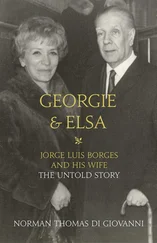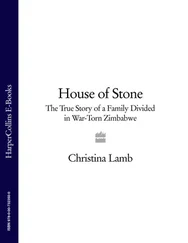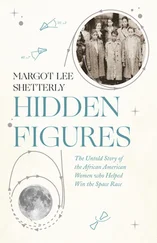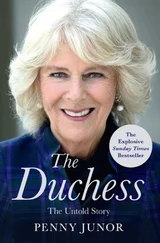Jamaica was known by its original settlers, the Arawak peoples, as the Island of Springs. It is in the omnipresent high country that resides Jamaica’s unconscious: the primal Blue Mountains and hills are the repository of most of Jamaica’s legends, a dreamlike landscape that furnishes ample material for an arcane mythology.
On the north side of the Blue Mountains, in the parish of Portland, one of the most beautiful parts of Jamaica, is Moore Town. It was to the safety of the impenetrable hills that bands of former slaves fled, after they were freed and armed by the Spanish, to harass the English when they seized the island in 1655. The Maroons, as they became known, founded a community and underground state that would fight a guerrilla war against the English settlers on and off for nearly eighty years.
When peace was eventually established, the Maroons were granted semi-autonomous territory both in Portland and Trelawny, to the west of the island. In Moore Town was buried the great Maroon queen, Nanny, who led her people in battles in which they defeated the English redcoats. Honoured today as a National Hero of Jamaica, Nanny’s myth was so great that she was said to have the ability to catch musket-balls fired at her – in her ‘pum-pum’, according to some accounts.
Jamaica has always been tough. The Arawak peoples repulsed invasions by the cannibalistic Caribs who had taken over most of the neighbouring islands. Jamaica was an Arawak island when it was discovered in 1494. ‘The fairest island that eyes have beheld; mountainous and the land seems to touch the sky,’ wrote Columbus. Although he may not have felt the same nine years later, on his fourth voyage to the New World. In St Ann’s Bay, later the birthplace of Marcus Garvey, Columbus was driven ashore by a storm, and his rotting vessels filled with water almost up to their decks as they settled on the sand of the sea-bed.
Later placed into slavery by the Spaniards, the Arawaks were shockingly abused, and many committed suicide. Some were tortured to death in the name of sport. By 1655, when the English captured the island, the Arawaks had been completely wiped out.
Even after the 1692 earthquake, piracy remained such a powerful force in the region that a King’s pardon was offered in 1717 to all who would give up the trade. Many did not accept these terms, and in November 1720 a naval sloop came across the vessel of the notorious pirate ‘Calico Jack’ Rackham anchored off Negril, in the west of Jamaica. Once the crew was overpowered – with ease: they were suffering from the effects of a rum party – two of the toughest members of Rackham’s team were discovered to be women disguised as men: Anne Bonny and Mary Read, who each cheated the gallows through pregnancy.
Those Jamaican settlers who wished to trade legally could also make fortunes. Sugar, which had been brought to the New World by Columbus on the voyage during which he discovered Jamaica, was the most profitable crop that could be grown on the island, and it was because of their importance as sugar-producing islands that the British West Indies had far more political influence with the English government than all the thirteen American mainland colonies.
Sugar farming requires a significant labour force, and it was this that led to the large-scale importation of African slaves. For the remainder of the eighteenth century, the wealth of Jamaica was secured with the 1713 Treaty of Utrecht, which ended the War of the Spanish Succession: one of its terms was that Jamaica became the distribution centre for slaves for the entire New World. The first slaves shipped to the West Indies had been prisoners of war or criminals, purchased from African chiefs in exchange for European goods. With a much larger supply needed, raiding parties, often under the subterfuge of engaging in tribal wars, took place all along the west coast of Africa. The horrors of the middle passage had to be endured before the slaves were auctioned, £50 being the average price.
Although the money that could be earned was considerable compensation for the white settlers, life in Jamaica was often a worry. There were slave revolts and tropical diseases. War broke out frequently, and the island was then threatened with attack by the French or the Spanish – Horatio Nelson, when still a midshipman, was stationed on the island. Hurricanes, which invariably levelled the crop, were not infrequent; and earthquakes not unknown. In the late seventeenth century Kingston harbour was infested with crocodiles, but it should be said that in those days inhabitants of the entire south coast of the island always ran the risk of being devoured by them.
Despite such disadvantages, it has always been hard for Jamaica not to touch the hearts of visitors, with its spectacular, moody beauty. The island contains a far larger variety of vegetation and plantlife than almost anywhere in the world (as it is located near the centre of the Caribbean sea, birds carrying seeds in their droppings fly to it from North, Central, and South America). Jamaica’s British colonisers added to this wealth of vegetation, often whilst searching for fresh, cheap means of filling the bellies of its slaves. The now omnipresent mango, for example, was brought from West Africa and it was on a journey across the Pacific to bring the first breadfruit plants to Jamaica that the mutiny on the Bounty took place.
Slavery was eventually abolished in 1838. From the 1860s, indentured labour from India and China was imported; the Indians brought with them their propensity for smoking ganja, itself an Indian word (interestingly, sometimes spelt ‘gunjah’), as well as the plant’s seeds. In the 1880s, a new period of prosperity began after a crop was found to replace sugarcane – the banana. In 1907, however, this new prosperity was partially unhinged by the devastating earthquake that destroyed much of Kingston. The economy recovered, and the next wave of financial problems occurred in the late 1930s, as the worldwide depression finally hit the island. A consequence of this was the founding of the two political parties, the Jamaica Labour Party (JLP) under Alexander Bustamante and the People’s National Party (PNP) under Norman Manley, which would spearhead the path towards independence in 1962.
On 6 August 1962 Jamaica became an independent nation. The Union Jack was lowered and the green, gold, and black standard of Jamaica was raised. Three months previously, the JLP had won a twenty-six-seat majority and taken over the government under Prime Minister Bustamante. Paradox is one of the yardsticks of Jamaica, and it should be no surprise that the Jamaica Labour Party has always been far to the right of its main opposition, the People’s National Party.
Beneath this facade of democracy, the life of the ‘sufferah’, downcast in his west Kingston ghetto tenement, was essentially unchanged. In some ways things were now more difficult. The jockeying for position created by self-government brought out the worst in people. Soon the MPs of each of the ghetto constituencies had surrounded themselves with gun-toting sycophants anxious to preserve their and their family’s position. In part this was a spin-off from the gangs of enforcers that grew up around sound systems: back the wrong candidate in a Jamaican election and you can lose not only your means of livelihood, but also your home – and even your life. Political patronage is the ruling principle in Jamaica.
During the 1960s, Jamaican youth, who felt especially disenfranchised, sought refuge in the rude-boy movement, an extreme precursor of the teenage tribes surfacing throughout the world. Dressed in narrow-brimmed hats and the kind of mohair fabrics worn by American soul singers, rude boys were fond of stashing lethal ‘ratchet’ knives on their persons, and bloody gang fights were common. Independence for Jamaica coincided with the birth of its music business; in quick succession, ska, rock steady, and then reggae music were born, the records often being used as a kind of bush telegraph to broadcast news of some latest police oppression that the Daily Gleaner would not print.
Читать дальше












